Last Updated
The first thing many visitors do after getting settled in Los Cabos for their vacation is head to the beach, as the destination is known for having beautiful beaches.
But while vacations are meant to be fun, safety should always be a top priority, especially when entering the sometimes unpredictable sea.
You should always heed the warnings of local officials, and right now, Los Cabos tourists are being warned to watch out for a dangerous type of marine life called the “blue dragon.”
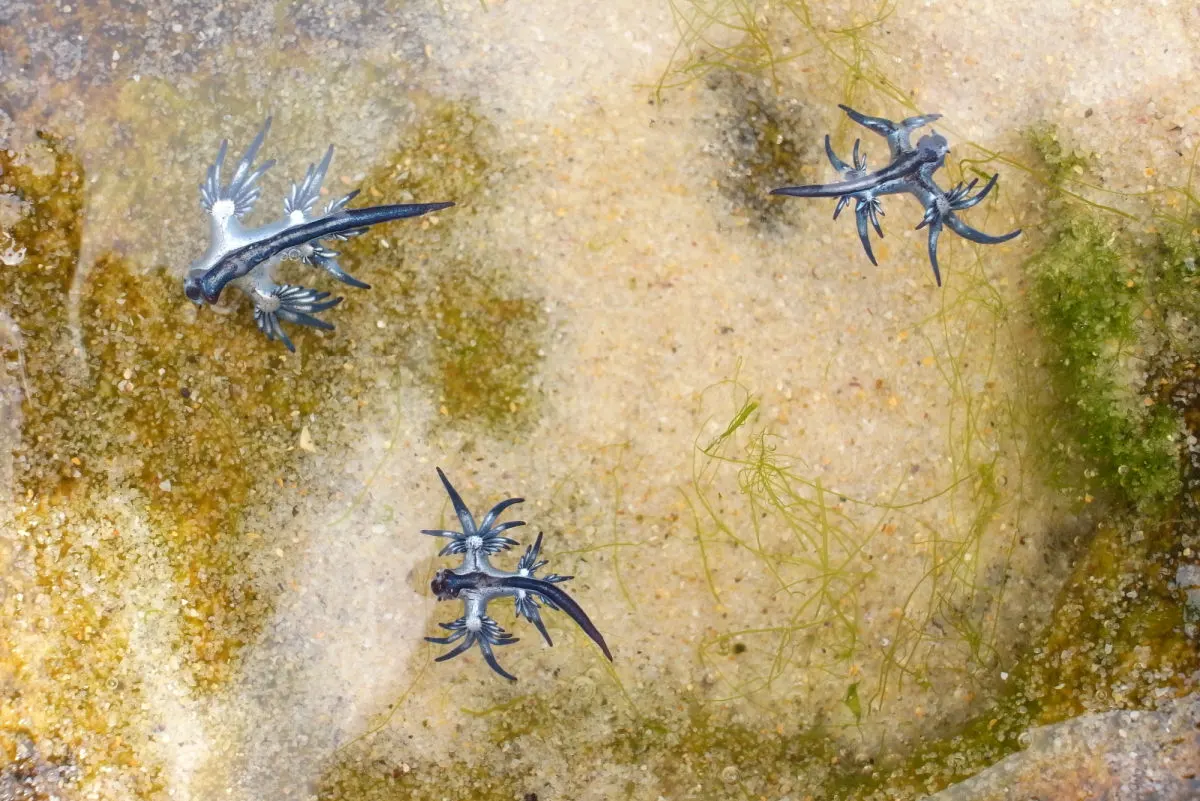
What Is A Blue Dragon?
A blue dragon is a sea slug that floats on top of the water and wash up on the shores.
They are somewhat mesmerizing creatures that are bright blue in color and 1-2 inches long, with six limbs sticking out, each with several spike-like appendages.
It is these appendages that can be dangerous.
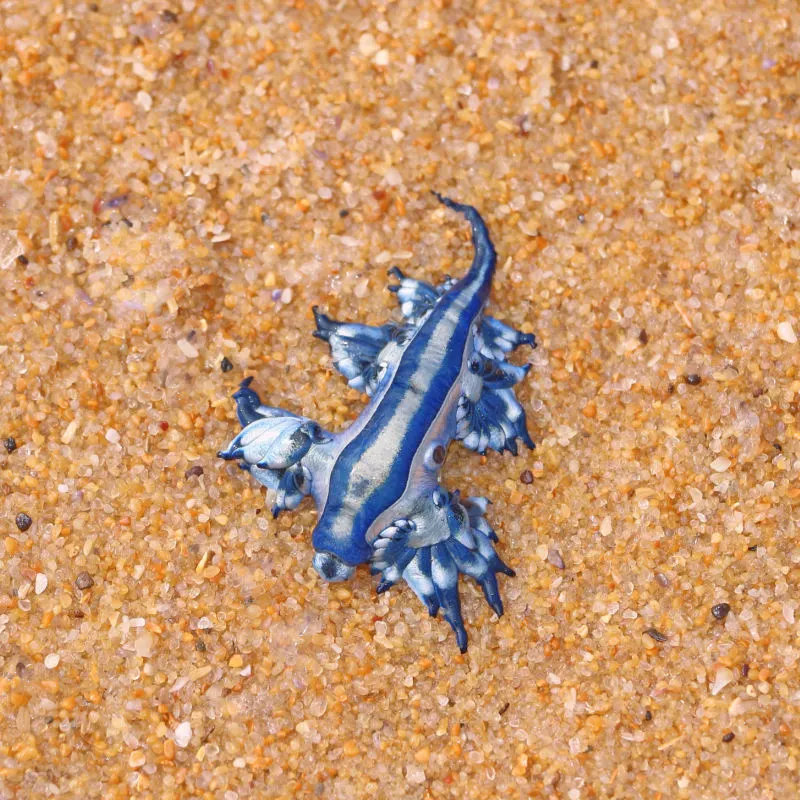
Why They Should Be Avoided
The danger of blue dragons is in what they eat, and what they eat is one of the most dangerous types of organisms beachgoers have to watch out for, the Portuguese Man o’ War.
They eat the tentacles of these jellyfish and, as a result, they become venomous as well.
Getting bit by one can be very painful, so touching them should be avoided.
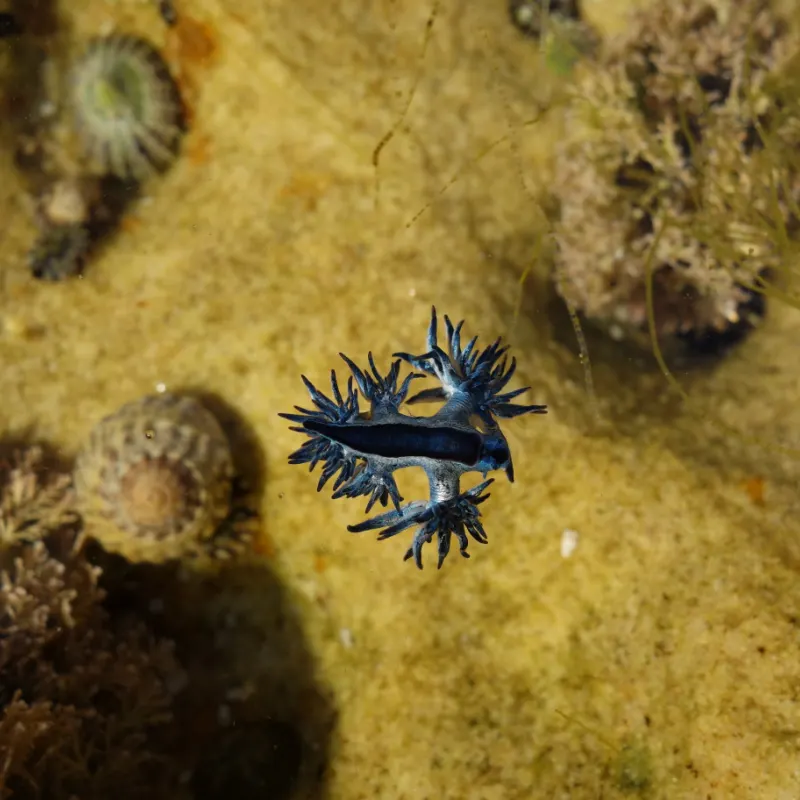
Beaches Where They’re Present
Blue dragons being so close to the shore in Los Cabos is rare, but they are currently present on various beaches.
However, the higher concentration is in the La Ribera area.
La Ribera is north of San Jose del Cabo, not too far from Cabo Pulmo, so if you’ll be visiting that area in particular, it’s important to watch out for them.

Other Dangers To Watch Out For On Los Cabos Beaches
Although dangerous sea life is rarely present on Los Cabos beaches, dangers can always lurk beneath the surface of the water.
Fortunately, the water is pretty clear in Los Cabos, so you can often see what dangers lie beneath.
The most present dangers at Los Cabos beaches that you can’t see are the strong waves and unpredictable currents, which are important to be cautious of.
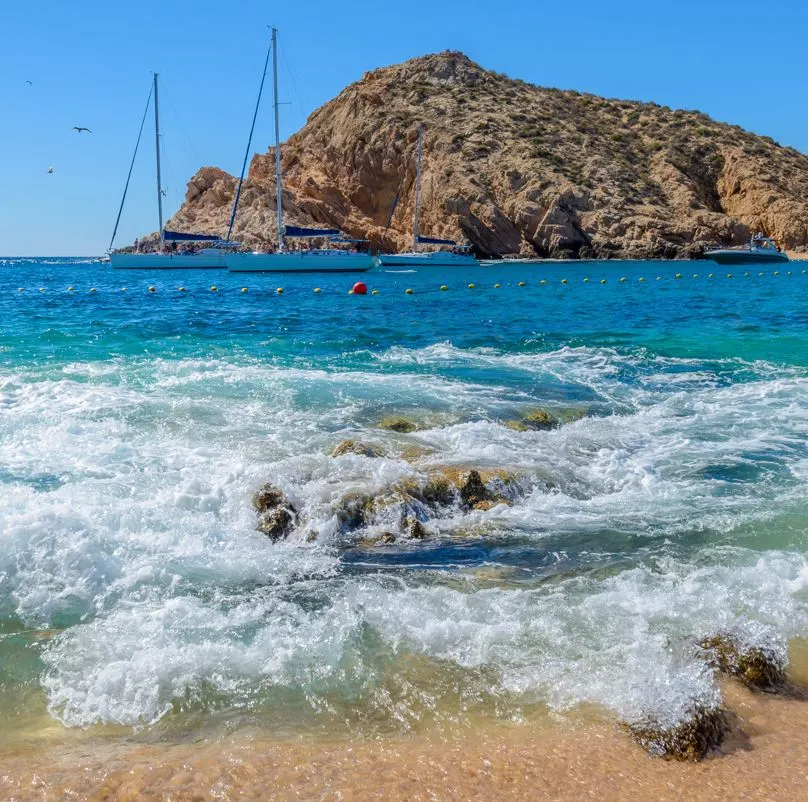
The Warning Flag System That Can Save Your Life
Los Cabos’ beach flag warning system can help you avoid both types of dangers.
Black and red flags signal dangerous water conditions, while yellow is a warning to be cautious of current conditions.
A white flag is used to alert beachgoers that dangerous marine life may be present in the water.
When a green flag is present, it is the only time that the beaches are completely safe for beachgoers.
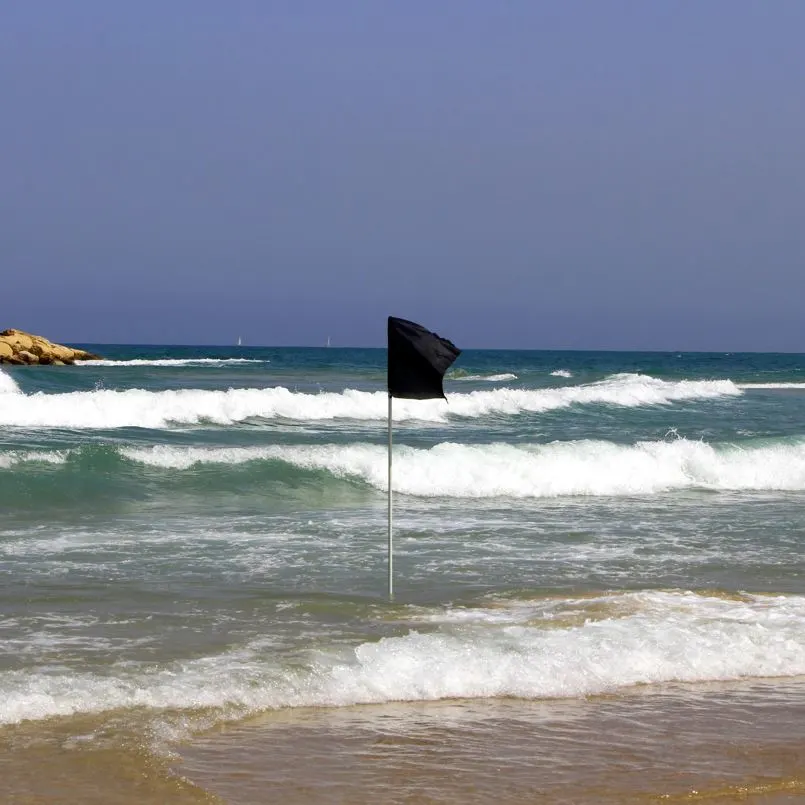
Top Beaches In Los Cabos
The good news is that Los Cabos has 25 beautiful, Blue Flag-certified beaches, and if conditions are unsafe at one, it doesn’t mean that they will be at others.
Some beaches in Los Cabos are always unswimmable, but there are plenty that are.
The top beaches in Los Cabos for swimming include:
- Medano Beach
- Santa Maria Beach
- Chileno Beach
- Palmilla Beach
- Lover’s Beach
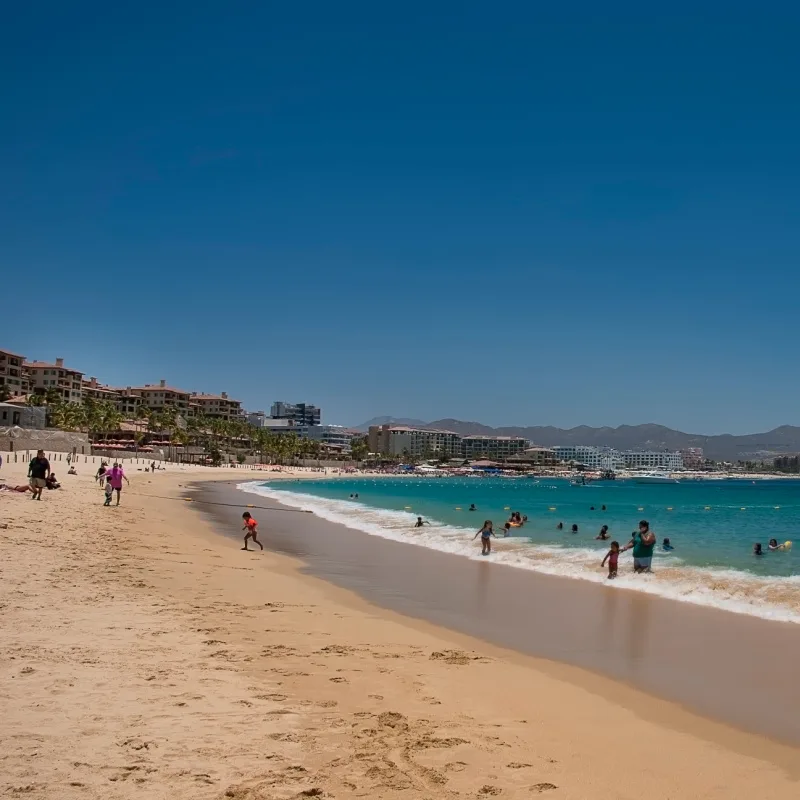
Other Things To Do When The Beaches Aren’t Safe
If you do find yourself in Los Cabos during a period in which the beaches are unsafe for swimming, at least there is no shortage of other things to do.
Several different types of land tours can be taken, including horseback and camel riding tours.
The marina area in Cabo San Lucas has plenty to explore, and San Jose del Cabo has a beautiful downtown where you can stroll the streets and do some shopping.
The moral of the story is that you’ll always be able to find something to do on your Los Cabos vacation, even if the beaches are to be avoided, so don’t risk it if dangers are present.
Plan Your Next Cabo Vacation:
Traveler Alert: Don’t Forget Travel Insurance For Your Next Trip!
Choose From Thousands of Cabo Hotels, Resorts and Hostels with Free Cancellation On Most Properties
↓ Join The Community ↓
The Cabo Sun Community FB group has all the latest travel news, conversations and current events happening in Los Cabos

Subscribe to our Latest Posts
Enter your email address to subscribe to The Cancun Sun’s latest breaking news affecting travelers, straight to your inbox.
